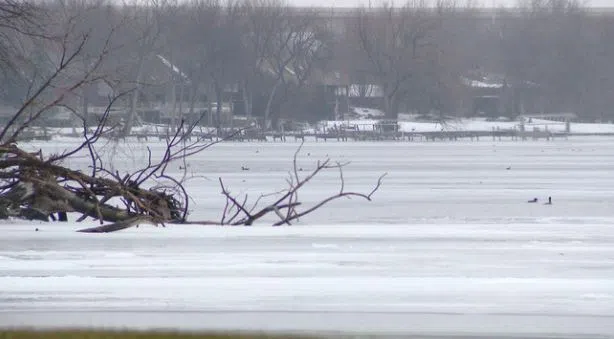WINNEBAGO, CO (WTAQ-WLUK) – Temperatures in the 30s this week was exactly what many ice fisherman were hoping not to see after a few weeks of cold weather. Add rain on top of the warmth, and experts say you’ve got a dangerous combination.
But it’s going to take more than a few warmer days to stop Northeast Wisconsin anglers from getting onto the ice.
“Ice is plenty thick,” Cory Brenner said. “Just a little damp on top from the rain but other than that, still holding good.”
Officials with the state Department of Natural Resources say there’s more to the story than the ice’s thickness.
“Ice is deteriorating, especially that shoreline ice,” Recreation Warden Marcus Medina said. “We’re also seeing the quality of ice deteriorate, so even though there may be a solid depth of ice, the quality is always in question when you get these warmups.”
It’s important to remember — especially on a rainy day like this — that all ice can be deceiving. In Menasha on Lake Butte Des Morts, for example, what might look solid in one area can look completely different just feet away.
“It’ll be a softer, less stable ice that is most apt to breaking up,” Medina said.
Medina said anyone venturing out onto ice should keep in mind the weather and the specific body of water they’re on.
“Every lake is unique and has different kinds of features that can affect the freeze, thaw cycles,” Medina said. “So, it’s always your best option or best idea to check with the local bait shops, check with local sports clubs.”
On Friday, many fishermen flocked to the smaller inland lakes, like Butte Des Morts, Poygan or Winneconne.
“I just usually go where the crowd goes,” Brenner said. “So, if you’re ever in doubt and if you see people out there, it’s usually a good sign. If they haven’t gone in, keep an eye out.”
Brenner said he feels more confident going out onto the ice when he knows the water below isn’t very deep to begin with. Even then, he’s checking the ice along the way and putting his safety first.
“When you get about a foot of ice in most places, kind of takes to take a bit of the stress off,” Brenner said. “But there’s some people pretty far out there, so they must have more guts than I do.”
Ice should generally be a minimum of four inches thick for foot traffic and a foot thick for truck travel.
The Annual Sturgeon Spearing season on the Lake Winnebago system is set for February 10th.










Comments